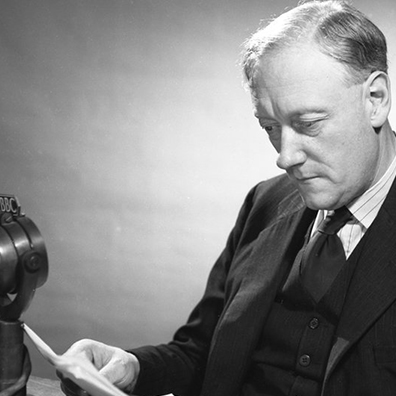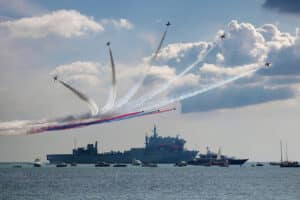
Investigating an airline accident – Part II
1,531 words • 9 minutes

Imagine that reports are trickling in that an airliner has crashed. The details are still sketchy and the number of casualties is unknown, but it sounds bad—very bad. The airlines, the regulatory and investigatory agencies, and a host of other responsible parties are suddenly swamped with questions—questions that need to be quickly answered as lives might still be on the line.
Investigating an accident is difficult under the best of circumstances as the aircraft might be in a million pieces. Yet there is a rhyme and reason as to how one goes about this gruesome task and viewing it in three distinct phases helps in the understanding. I frame them as the initial response, the investigation, and the recommendations/reporting.
The first phase is pretty clear. The emergency services and law enforcement get to the scene, wherever it might be, as quickly as they can and start putting out fires, saving lives, and cordoning off the area to preserve human remains and physical evidence.
The second phase commences when the specialists arrive to investigate how and why the accident occurred. In the third phase, these investigators publish their findings and make recommendations to the wider aviation industry.
In the first phase the authorities must deal with the following immediate questions:
• Where in the world did the accident occur? Was it on land or over the ocean in international waters?
• Which country? A war-torn region or one at peace with its neighbors? (I remind the reader of the Malaysian 777 shoot-down over a war-torn region of the Ukraine)
• If on land, what kind of terrain? Mountainous? Urban?
• Are first responders on the scene? If so, what are they reporting?
• Was a military force in involved? Perhaps a collision with a civilian airliner?
• Which airline? From which country?
• What is the nationality of the passengers?
• Is a terrorist or criminal act suspected?
The fact that all these questions seem to come at once demands crisp crisis management and the rapid establishement of clear lines of authority and communication. Let’s look at some of these in detail.

The first responder’s top priority is to bring any survivors to safety. The bulk of the initial resources and manpower should therefore be dedicated to these efforts. Each accident is different and might require specific skills. Mountain climbers if the accident was in the mountains of South America or experienced cold weather search and rescue crews if it was in the frigid wastelands of northern Canada in the winter. If the first responders do not have experience in mass casualty exercises, that will be a hurdle in how the authorities craft an effective response and marshal resources.
While the airlines, engine and airframe manufacturers, government agencies, and others all want to be on the scene as soon as possible, it is critical to keep them at bay while the rescue professionals are desperately trying to save lives.
Sadly, but understandably, there is never a “good place” for an accident to occur, so there is not a ready-made template. Instead, the authorities will have to use experience and judgement to deploy the best mix of responders, law enforcement, and medical services to the accident site.
As the police cordon off the accident scene, the rescue personnel will keep an eye open for the “black box” data and voice recorders.
These boxes are absolutely indispensable to an investigation and the responders must be briefed on quickly locating these crash resistant metal boxes. Usually housed near the tail of the aircraft, they are not painted black as the name would suggest, but rather a bright rescue orange so as to be visible to the recovery crews.
As the first responders tackle their chores, the authorities make a series of important decisions. They first determine which country has the overall responsibility for the recovery and investigation. Normally, by international agreement, the country in which the accident took place is the responsible authority, but this is not always the case.
While this might be patently obvious and simple if a U.S. airliner crashes on American soil, it is more complex if the accident is over the ocean and in international waters or the host country does not have the resources equal to the task. What, for example, if the area is war-torn or is contested between two countries as is the case in Kashmir? This is not as rare as it seems. As I hinted at earlier, an example is how badly the investigation of the downed Malaysian 777 was hampered because Russia limited access to the crash site.
If the host country does not have adequate resources to undertake a full recovery and investigation, they can call on other nations to fill the gaps. In the recent Ethiopian accident, for example, the French were asked to read the information from the data recorders.
The information flow surrounding airline accidents is often elevated to the embassy level where the diplomatic staffs assist in contacting the responsible parties and apportioning responsibility. They are experts in handling the cross-border inquires and have the contacts to get information flowing in the right direction. In our interconnected world, almost any air disaster is sure to have international considerations and so the embassies are a crucial hub in post-crash activities.
Remember Part I how I described the United Nations sub-agency ICAO—the International Civil Aviation Organization? Well, ICAO also has a role to play in accident investigation. It has a deep reach-back to experts and can lend a hand where and when necessary.
Again, I know some of this sounds obvious, but I want you to get a feel of the depth and breadth of the lines of communication and authority that must be established and how many “players” can be involved. We often joke about corporate reporting charts looking like a mashup of spaghetti, but think about when they go international!
As a further consideration, it is not uncommon to have international flights with forty or more nationalities on board. When an accident occurs, each country wants information about its own citizens, the passenger lists, and the number of fatalities and missing.

Naturally, the airline that owns the aircraft also wants immediate information. While a lost data link probably triggers a warning at the airline’s headquarters, the accident scene might be thousands of miles away so not only can it be hard to obtain good information, it is often a Herculean task to process it and act accordingly. Think of a U.S. airliner crashing on Spanish soil or a Finish jetliner disappearing from radar somewhere over the Gobi Desert.
The aircraft manufacturers will also want to know what happened. Boeing and Airbus are the two major aircraft builders today and there is a good chance that a major accident involved a plane from their assembly line. With gallows humor we joke about lawyers getting involved, but these manufactures will be part of the investigation and they want to get their internal bureaucratic machinery in gear. They also have “go teams” on call and will send their representatives to the crash site to assist as needed or requested.
These days, until it is definitively ruled out, one must unfortunately assume that terrorism might have played a role. This means that law enforcement is expected to preserve what evidence it can and prevent it from being compromised. This added layer of oversight can complicate matters as there is now a criminal investigation taking place at the same time as the accident investigators are doing their work. We saw this not only on 9/11, but also during the investigation of TWA flight 800 in 1996 and the French airline UTA’s loss of flight 772 over the Nigerian desert in 1989.
Before I close for this week, I would like to briefly introduce the concept of being “party to an investigation.” This a legal phrase that the authorities use in describing who the participants are in the investigation. Some parties such as the airline itself, the manufacturer, etc. might have a great deal of input and participation while others have just a little. Not a perfect analogy I know, but think of the players out on the field during a football game and you will have a decent idea of what being party to an investigation means.
I hope I have given you a good idea of the number of moving parts in the first stages of an accident investigation. From rendering first-aid at the crash site to determining who the legal parties are there is much to do. With this much going on, organization and communication are the crucial ingredients cornerstones to a successful investigation.
Next week we will finish with the series with Part III—the actual investigation and reporting.
In the meantime, I wish you tailwinds!
![]()
Note 1: In the world of health and safety there is a difference between accidents and incidents. Broadly speaking, in an incident property is damaged. In an accident, humans are killed or injured. You can see an introduction here: Accidents & Incidents
Aviation pretty much hews to this definition but there can sometimes be a dollar value that is assigned. Imagine a plane might hit part of the jetbridge as it approaches the gate. This might be a repair costing a few thousand dollars or so. On the other hand, if the airplane catches on fire as it is sitting at the gate and burns totally to the ground, then some might refer to this as an accident as the dollar amount is so high. Technically lives are not lost, but it sure cost a pretty penny to have to replace an entire aircraft.
The word “crash” is a bit tricky. Purists normally do not want to see it used in formal safety programs and advocate the use of the words accident and incident. But…even the NTSB uses it on their website to break up the monotony of the terms and I agree with their approach. The word crash is so obvious that it needs no introduction. We can leave the formality to the written reports where we need the accuracy in terminology.







Neal – truly enjoying this series! The closest thing I’ve ever experienced was serving as logistician on the then-unspoken-of WMD response team (Army) at the Atlanta Olympics in 1996, and the Presidential Inauguration in January of 97. Jurisdiction clarification was akin to unraveling the Gordian knot!
Question – while acknowledging the Civil in the ICAO, would the NTSB ever be involved in investigating a US military aircraft incident/accident? By this I mean actual service owned aviation assets, not contracted movers or CRAF.
That is a good question and one that I will look into a bit more. My understanding at the moment is that normally the military will run the investigations into accidents and incidents involving its assets. From my military experience it was always an “in house” investigation.
However…the NTSB can be called if a certain level of expertise is needed, if the military requests assistance, or the accident/incident occurred at a civilian airfield. In the latter the military would still be the lead dog, but the NTSB might have areas that it needs to investigate.
I will look into this a bit more and let you know what I find out.